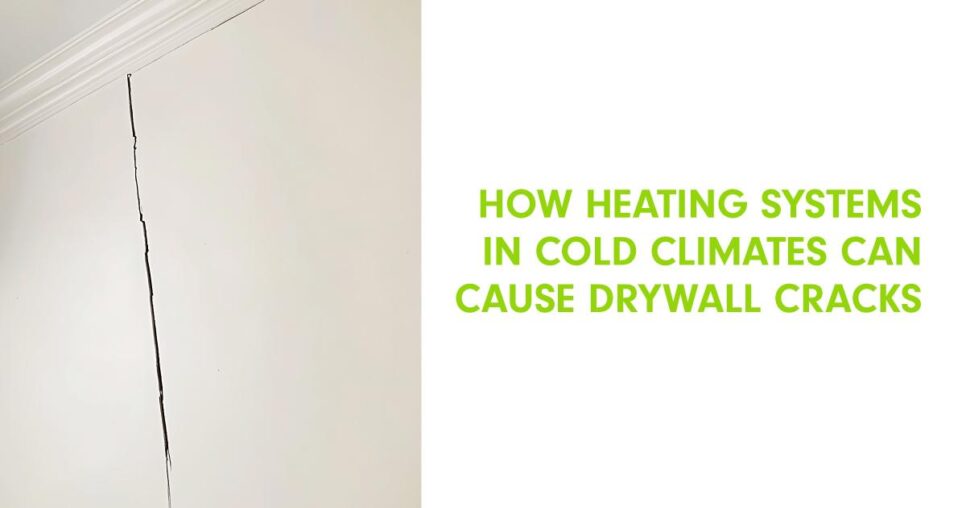When the temperature drops and your heating system kicks into high gear, it’s a comforting feeling until you notice small cracks forming along your walls or ceilings.
If you live in a colder climate, you’ve probably seen this happen and wondered:
Why now?
The truth is, your home’s heating system and the dry winter air can have a big impact on your drywall.
How and Why Do Cracks Happen?
Drywall might seem solid and unchanging, but it’s actually part of a living, breathing structure that expands and contracts with changes in temperature and humidity. When you turn on your heat during cold months, the warm, dry air causes materials like wood framing and drywall to lose moisture and slightly shrink. As they contract at different rates, small stress cracks can appear, usually near corners, seams, and ceilings.
Forced-air heating systems can make this worse by circulating dry air throughout your home. Over time, that lack of humidity pulls moisture from your walls and ceilings, making them more prone to cracking. Even high-quality drywall installations can’t completely escape the effects of seasonal changes.
Common Places Where Cracks Start
Most homeowners spot these subtle cracks above doorways, along ceiling seams, or in the corners where two walls meet. They often start as hairline fractures but can widen or reappear each winter if the underlying cause, dryness and expansion, isn’t addressed.
These are cosmetic issues at first, but if left untreated, they can lead to peeling tape or uneven surfaces.
What You Can Do to Prevent Cracks
The best way to fight seasonal cracking is to maintain stable humidity levels in your home. A humidifier can help keep indoor air between 30–50% humidity, which prevents materials from drying out too quickly. You can also use ceiling fans on a low, reverse setting to circulate warm air evenly and reduce temperature extremes between rooms.
Sometimes, repeated or widening cracks signal a deeper issue, like shifting framing or hidden moisture problems. If you’re not sure what’s causing the damage, it’s worth getting an expert opinion.
PatchMaster Drywall Repair Specialists can assess whether your cracks are purely seasonal or warrant a closer look, and make long-lasting repairs that blend seamlessly with your existing walls.
Bottom line: In cold climates, drywall cracks are often a normal side effect of your heating system doing its job. A little maintenance and awareness go a long way. If the damage goes beyond seasonal wear, help from a drywall repair specialist ensures your home looks its best year-round.

